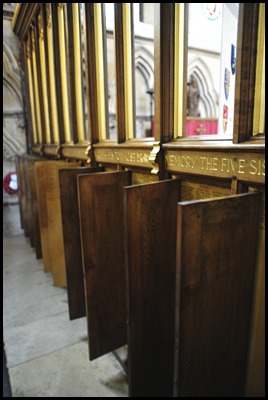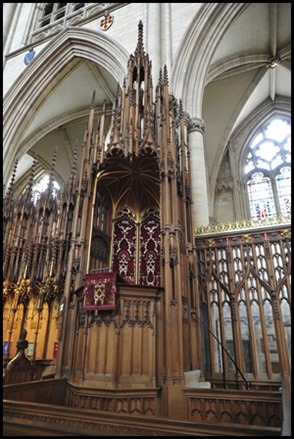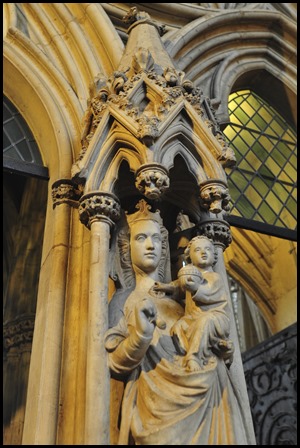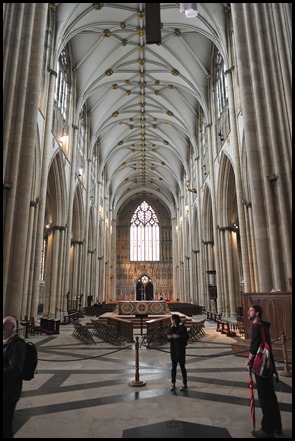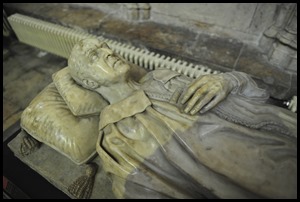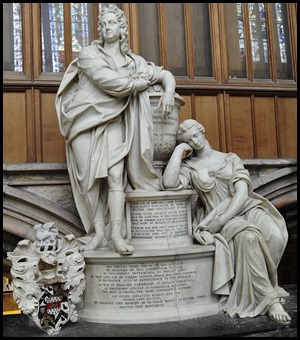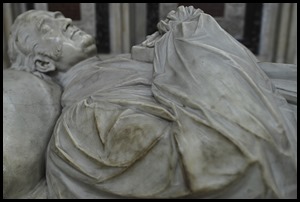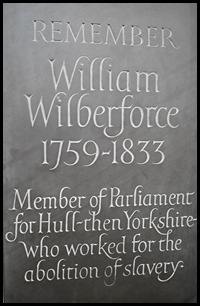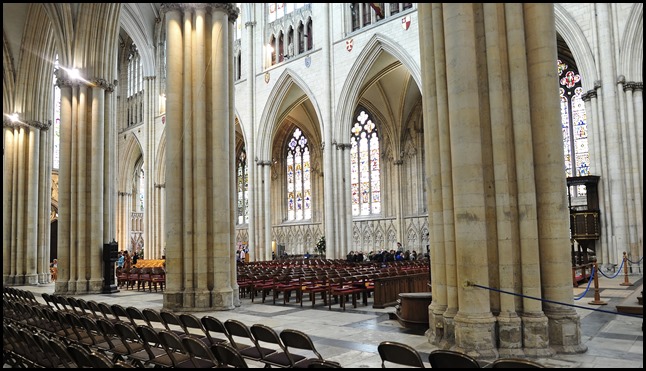York Minster

|
Our Bimble Around York Minster
and Bits
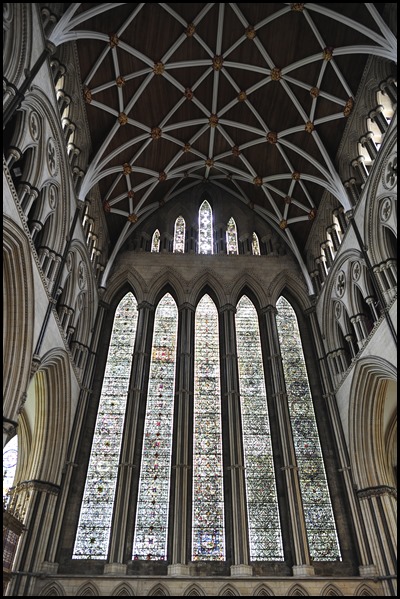 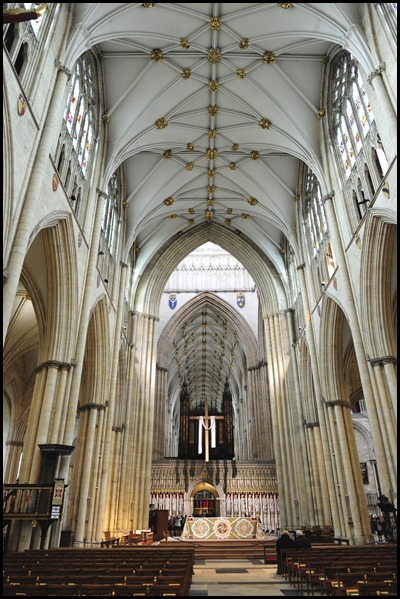 The first thing that hit us as we
entered York Minster was the sheer size, the stained
glass and the main altar.
 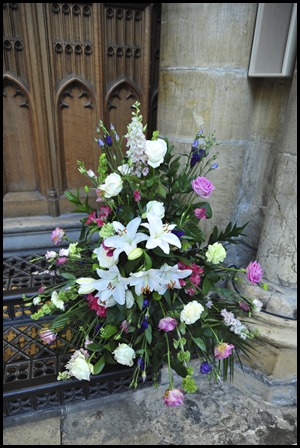  Then the feeling of being in an
enormous but nonetheless ‘usual’ House of God with the
flowers.
 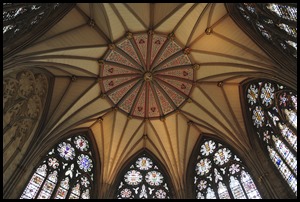 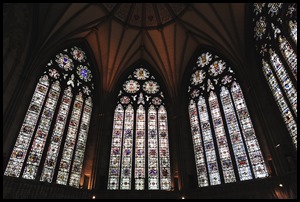 The breath-taking Chapter House was
finished around 1290, designed for the Canons of York – the governing body of
the cathedral, to meet and discuss policy. There are forty
four seats around the octagonal walls. Unlike most polygonal Chapter
Houses, there is no central column holding up the roof. Instead, the ingeniously
designed wooden vault is suspended from the timber structure higher up. The painted ceiling dates from 1798, although the ribs and
wooden bosses are mostly original. The stained glass
windows cover the biggest area we have ever seen. The Minton tile floor
dates from 1845.
  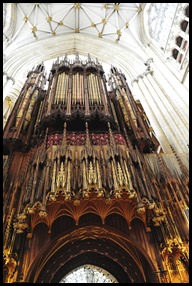  The Quire
was started in 1361 by Archbishop Thoresby. Daily Evensong is held here and the
choir sings from this Perpendicular Gothic Style.
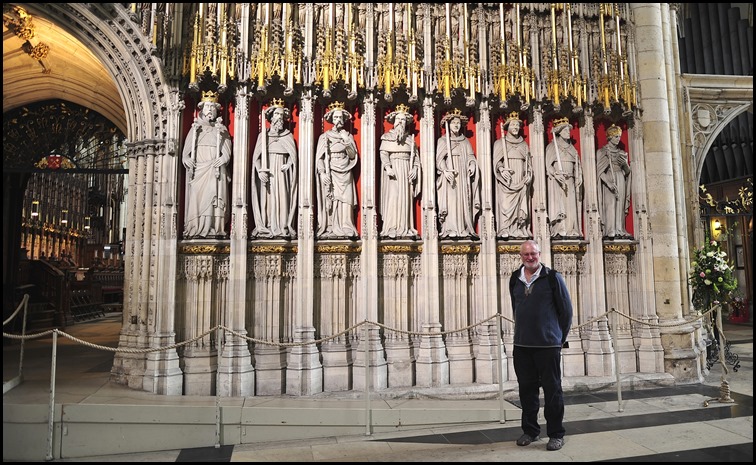 The Quire Screen separates the
Quire from the rest of the Minster. It also serves to strengthen the Tower
columns. The fifteen kings on the screen are the ones
who reigned during the construction of the Norman and medieval
cathedrals.
 The eagle
lectern was made in 1686 and weighs one and a half tonnes.
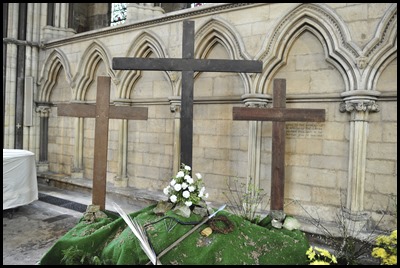  Easter
feature.
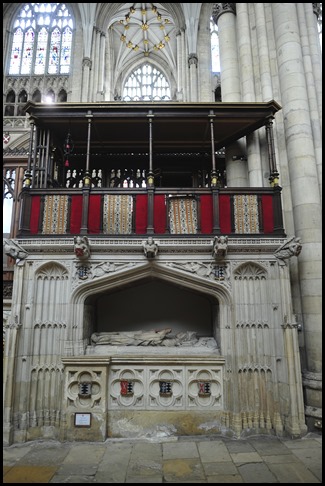 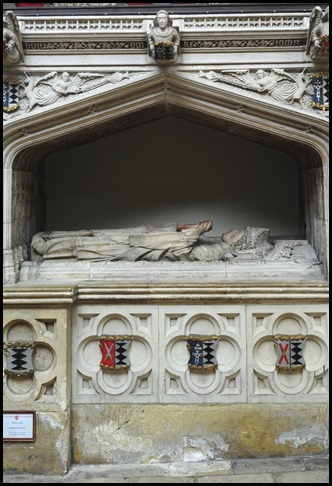 The Tomb of Thomas Savage: Thomas was born in 1463, the second son of the many children of Sir John Savage, K.B., of Clifton, Cheshire, by his wife Katherine, daughter of Thomas Stanley, 1st Baron Stanley, K.G. He spent some years in study at Oxford University, graduating with a Bachelor of Arts degree before 1474. He was then sent abroad, studying at the University of Bologna before July 1477, and then at the University of Padua, where he was admitted a Doctor of Canon Law, and acted as a jurist Rector 1481–2. Career: He was appointed Rector of Davenham, Cheshire, 1470; Rector of Jacobstow, Devon, 1474; Rector of Monks Risborough, Buckinghamshire, 1484 and Rector of Rosthorne, Cheshire. In 1490 he took part as a representative of England in the unsuccessful conference at Boulogne. On the 3rd of December 1492, Thomas Savage was nominated Bishop of Rochester. He was consecrated on the 28th of April 1493 and held the post until 1496 when he was translated to be Bishop of London. He was translated from the See of London on the 18th of January 1501 to be Archbishop of York, a post he held until his death on the 3rd of September 1507. While Archbishop he handled the marriage ceremony of Arthur, Prince of Wales to Catherine of Aragon. Prince Arthur died young, and his brother Henry, who became Henry VIII, then married Catherine. Thomas's body is buried here in York Minster where his effigy remains. His heart was buried in the Savage Chapel in the church of Macclesfield, Cheshire.
The Astrological Clock is a memorial to the men and women of the Royal Air Force of the Commonwealth and their Allies who, operating from bases in Yorkshire, Durham and Northumberland, gave their lives for us all during the Second World War. The edge of the large convex disc represents the horizon as seen from an aircraft directly over York and flying south. A plan of the Minster and the City Walls is picked out in gold in the centre. The clock’s ‘Sun’, represented by a gold disc, rises and sets on the horizon at the actual times of sunrise and sunset throughout the year. It crosses the vertical horizon, South pointing wire at noon. From day to day its path along the silver band representing the ecliptic varies so that it rises higher in the summer than in the winter. The dials at the bottom show, on the right, Greenwich Mean Time and on the left, the sidereal or star time. The dial on the other side of the clock shows the North Circumpolar Stars visible from the latitude of York or fifty four degrees north, circling round the Pole Star.
Some other things we saw.
ALL IN ALL SUCH TREASURES
|


